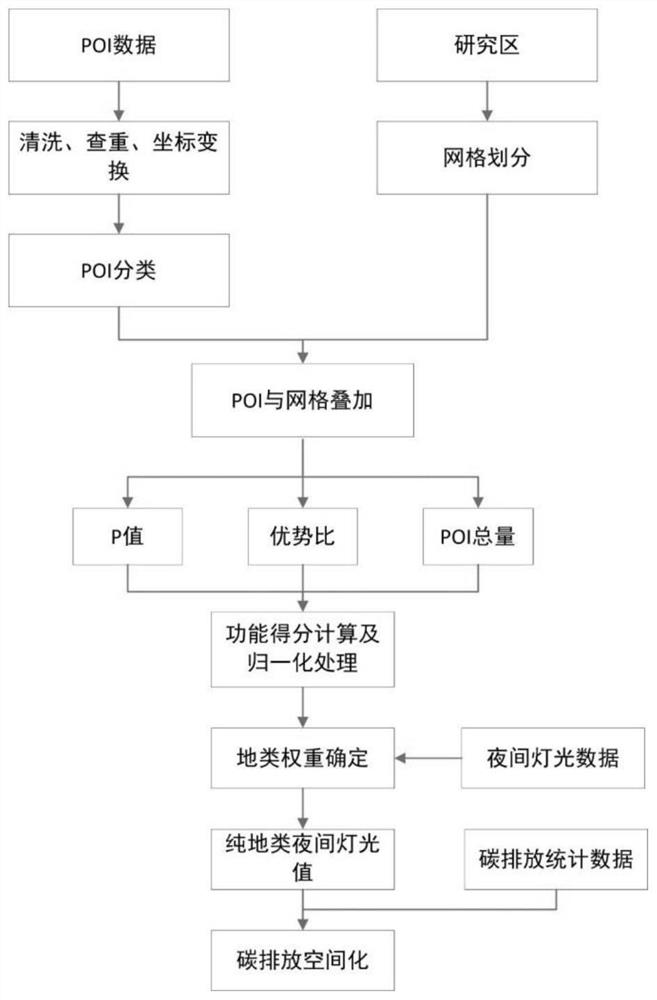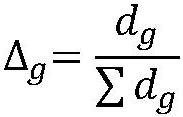Method and device for acquiring resident space carbon emission
A technology for carbon emissions and residents, applied in data processing applications, instruments, design optimization/simulation, etc., can solve the problem of low precision of carbon emissions in residential spaces, and achieve the effect of improving accuracy and accurate data sources
- Summary
- Abstract
- Description
- Claims
- Application Information
AI Technical Summary
Problems solved by technology
Method used
Image
Examples
Embodiment Construction
[0039] The specific embodiments of the present invention will be further described below in conjunction with the accompanying drawings.
[0040] method embodiment
[0041] The present invention proposes a method for obtaining carbon emissions in residential space, the specific process is as follows figure 1 shown. First obtain the POI data and nighttime light remote sensing data of the target area, and divide the target area into grids, determine the importance of each land type in each grid according to the POI data of each land type in each grid, and then based on the acquired nighttime The light remote sensing data calculates the night-time pure light value of each land type under each grid; according to the total residents’ carbon emissions in the target area and the proportion of the night-time pure light value of each grid residential land type in the target area, determine each Grid carbon emissions.
[0042] Step 1. Acquire data and preprocessing
[0043] The prese...
PUM
 Login to View More
Login to View More Abstract
Description
Claims
Application Information
 Login to View More
Login to View More - R&D
- Intellectual Property
- Life Sciences
- Materials
- Tech Scout
- Unparalleled Data Quality
- Higher Quality Content
- 60% Fewer Hallucinations
Browse by: Latest US Patents, China's latest patents, Technical Efficacy Thesaurus, Application Domain, Technology Topic, Popular Technical Reports.
© 2025 PatSnap. All rights reserved.Legal|Privacy policy|Modern Slavery Act Transparency Statement|Sitemap|About US| Contact US: help@patsnap.com



